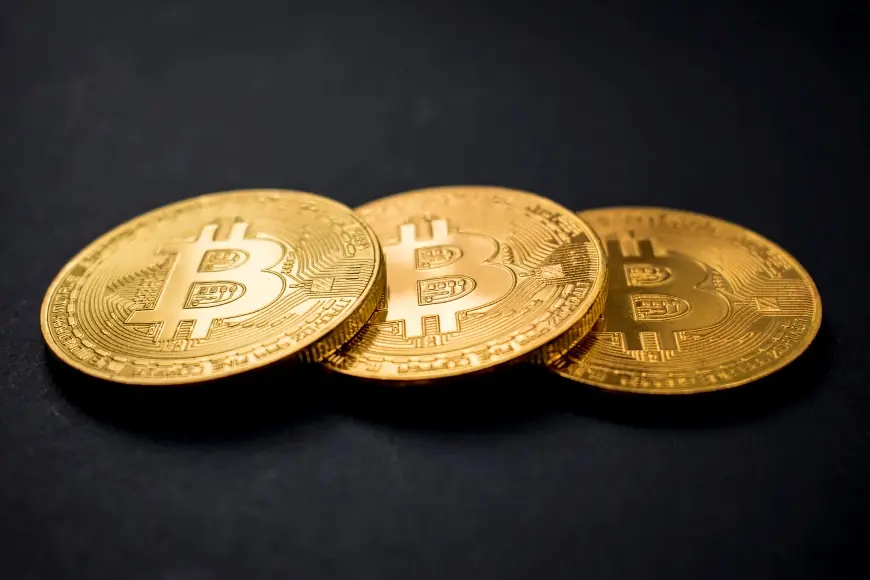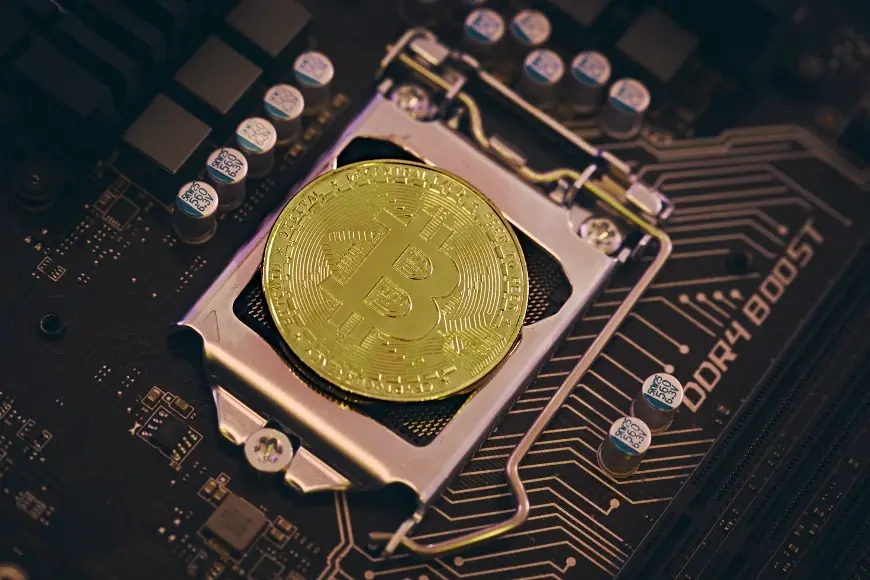

Bitcoin is Killing Banks - Payment Method Impacts Economy
Introduction
Means of payment that circulates without single monetary authority — who can possibly deny this sounds appealing? Crypto minimizes human interactions which seems like an efficient method to avoid corruption, having anonymous IDs in every dealing.
Analytics follow plot twists with great attention and what about buyers? Keeping assets safe&sound means worlds, earning profits feels rewarding, understanding trading key points could change lives.
Can Bitcoin kill central banks?
Such questions pop-up actively on media pages as well as among users societies. Sometimes discussions can end in deadlock: very small percent knows exactly which words sound true. Should we prepare ourselves while some extraordinary beginnings take their way here? Let us see how everything works.
Revolution and consequences
Bitcoin was introduced as another possible (yet scary) solution during 2008 economic crisis. That year, some person (or group of people) published a paper describing and explaining key principles peer-to-peer network bases on. This author (or authors) signed that work as Satoshi Nakamoto — we’ve got nothing but this pseudonym.
Decentralized medium of exchange idea was very intriguing but not new as being borrowed from 90s’ cryptography community. Some people predicted big possibilities displaying in form of unique payment method. 12 months later, first block (a.k.a. Genesis Block or Block № 0) was built. First 50 coins were generated. At the start unknown currency was obtainable only by miners, having no real monetary value.
Technically, that invention shares some characteristics with gold. Scarcity remains the main value source: final amount stays determined, limited. First commercial transaction was made in 2010. Starting with two pizzas ordered, paid with 10 thousand BTC in Florida story has many ups and downs. Having entered exchanges Nakamoto project was priced against U.S. dollar. Distributed at price of few cents when started, our badding rooker reached 20 thousand dollars value in 2017.
In 2011 people saw not one or two fresh currencies appear. Later, more than 1 thousand merchants were reported accepting crypto. Coinbase announced selling US$1 million value in single month. In 2021, first currency new generations embraced hit an absolute record above 65 thousand dollars of value, fell back. You may check current prices. Will our hero ever reach 100 thousand dollars bar? Experts say everything looks possible.
Can Bitcoin kill central banks?
Yes, question seems interesting, but shall we give up figuring out answers while having no clue what’s current conditions feel like? Structure is complex. Above all, there goes responsible authority. Such structure type may seem legit excessing many functions such as building trust, backstopping banknotes, preventing chaos (inevitable consequence when anyone could print their own money).
But such model requires authority provided with too much trust as well as too much responsibility. Cryptocurrencies stand apart from corruption while not having those three deterrents reining above regular funds:
-
a major authority;
-
a payment processor;
-
a company owner.
Role of central banks in an economy
Fiat currencies represent primary money form an overwhelming number of countries’ number accepts. Fundamentally, CB policymaking forms global financial system basis, regulates every aspect, and ensures stability (at least as supposed).
Mandates depend on internal regulations, usually consisting of broadly-drawn general economic ideas like «promoting economic and financial welfare». Those unities have huge impact on exports, imports, overseas investment.
Achieving its mandate, banks uses monetary policy. Policies regulate fiat currencies printing. Process includes mostly interest rates alongside money supplies manipulations. More money circulates means more people spend which helps economy grow. Though some improper management can cause serious declines. Understanding what role central unities play is quite important when making predictions about Bitcoin future development.
A Central Decision Making Authority for Recessions
If you look at some economic activity diagram you’ll notice drops following growth phases. Such declines are called recessions. Coming from monetary policy errors it might feel quite endurable or really exhausting. It usually lasts several months or years, affects all cash-related aspects such as employment, industrial production, real income, GDP, so on. Most recessions were caused by numerous factors, including:
-
low consumer confidence;
-
high-interest rates;
-
reduced real income, etc.
Look at these three striking examples: Great Depression in US, 1997 Asian Crisis, 2008 Great Recession. This list would go considerably longer. But is digital gold powerful enough to really kill old schemes? Will bright future chase old-timers away?
How new payment method impacts economy
Existing rules keep losing points as financial structures get complicated. World changed, money circulates so much faster than ten years ago. Bitcoin turns out to give reasonable alternatives as it allows sending online payments directly from buyer to seller not involving any controlling bodies. It solves double-spending problems double-spending as you’ll never spend it twice or fake it.
Commonly taken system does not work when transactions are peer-to-peer and approved by nodes across world. Anyone might build a node and start mining coins. Plus, anyone’s welcome to purchase them.
Can bitcoin kill central banks? Well, its independence makes it way more appealing for business, investments, individual purposes. Users get full freedom of sending & receiving funds worldwide without all those limitations which under-control system has.
Some say things are not so bright when digital gold shines. El Salvador remains the only country allowing crypto in commerce. Its markets remain quite volatile hardly offering an impressive stability instance. Such common actions as accepting salary or assigning mortgage turn out unreasonably risky if you Ethereum, for example. Again, self-education’s an essential link for any decision-making process.
Does Distributed Ledger Bring More Transparency?
Yes, it does. Main financial policy adopted worldwide means intermediaries in cross-border operations. But with some single party having its final say transparency suffers from violating. Blockchain technology has answers. All transactions are transparent.
Miners validate their data using encryptions with only users having access. Cheating/network changing are almost impossible because data records prevent even the slightest possibility of malfunctionning. Plus, information stays available 24/7. Here, we’d say BTC could kill regular financial institutions — or at least trigger sweeping changes.
What are CBDCs
Some time ago, financial structures’ builders and maintainers started taking blockchain elements to integrate them into already established system. Several countries’ banks added digital currencies into economies. Actions speak loud’n’clear here: power holders hurry up to implement new solutions keeping up (or at least trying hard) with insane paces.
They thrive among 2022s most discussable topics as big steps forward seem getting real. Above 80% countries have been researching subject. Pioneer to go outside test trials was Bahamas’ Sand Dollar firstly released in 2020.
Why so many moves? Seems obvious considering current events. What do existing currencies lack? Government backing reassuring confidence. Meet CBDCs coming on stage. Recognized by governments as legal tender they are for anyone in given jurisdiction, all merchants must accept them.
Turns out electronic layout of CB money is
- a.) issued by CB;
- b.) universally accessible.
Even people without bank account will get an opportunity to use online payments. Financial unities get lower-cost substitutes to cash. Looks like a remarkably strong move against decentralized finance. Seems like Swedish e-krona and Chinese digital yuan are expected to get followed by others.
Cryptocurrencies and CBDCs: Differences
-
First ones are decentralized, second ones arent.
-
Peer-to-peer money offers anonymity, their opponents don’t.
-
Crypto’s usually based on blockchain technology while CBDCs run on different technological platforms. Though many Nakamoto invention aspects are implemented (with varying success degrees) by old-school institutions.
Can Bitcoin kill central banks: Conclusion
A centralized system proved itself to come as a working way to manage economies. Still, not flawless and led to quite serious economic recessions. Distributed ledger technology based on algorithmic trust does not require main authority. However, its legal status remains discredited while its solutions being adapted to make cryptographic currencies approved by governments an unexplored reality.
Digital coinage’s free from corruption, bureaucracy, supervision. Today it still attracts investors having solid chances to demonstrate us new ups. Its development puts new challenges, aspires to new security solutions security.
In conclusion, digital currency has potential to change the very essence financial infrastructures have in the nearest future. Though it does not mean everything actually will go that way. Without prejudice to its evident advantages, we shouldn’t ignore the fact BTC has its drawbacks as well.
Central banks also have both supporters & haters. While firsts see them as crucial in maintaining order and stabilizing the whole system, others didn’t forget them having negative influence on society as well as provoking recessions. CBDCs long-expected introduction definitely means a new round of our story. Only time will tell how things go: who knows — one might believe unique technologies start killing old habits.
Q&A
1. How does blockchain work?
Blockchain’s a transactions ledger. They’re distributed across network connecting numerous computer systems with each other. Each block in the chain is a repository of transactions. When new trades are made, records are added to the chain. It’s available to every participant’s ledger.
2. Is investing worth it?
It’s volatile, so there’s no guarantee you succeed or lose buying it. Take your time to figure out if you really get the whole idea. Arm yourself with solid investment strategies. It’s highly recommended to make research before making moves. Learn how to buy/send it avoiding mistakes.
3. Did Bitcoin crash?
A crash’s too strong but the most popular peer-to-peer money did have a remarkable fall in 2021 alongside some other cryptomarket leaders.
4. What about biggest concerns?
Here’re the most common:
-
high transaction fees;
-
large price volatility (=a certain unpredictability).
5. What bothers authorities about digital ledgers?
It’s above regulations and helps users in avoiding capital controls. That explains the non-hidden distrust authorities demonstrate when the matter’s discussed.
6. Does any institution control Bitcoin?
BTC network has no owner. It’s controlled by all its users across globe. Developers may only improve software, they do not possess control or right to change protocol.
7. Can anyone buy bitcoins?
Yes, find verified sellers and try. Anyone’s welcome to purchase BTC but it’s recommended to study the subject, then act.
8. What is most important about bitcoin?
It’s an alternate method of payment, first decentralized peer-to-peer payment network powered by its users. No third party’s involved, nobody owns network or technology.

